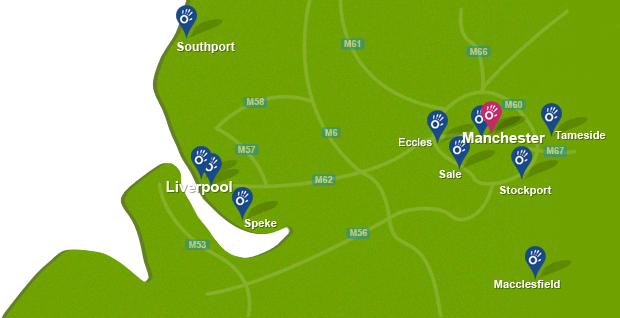 Above: Hydrotherapy session with close supervision from specialist physiotherapist
Above: Hydrotherapy session with close supervision from specialist physiotherapistSurgeries that would benefit from hydrotherapy
Many surgeries would benefit from hydrotherapy sessions within the rehabilitative programme. These include:
- Total joint replacement (hip, knee, ankle)
- Spinal surgery (discectomy, decompression, laminectomy, fusion, fixation)
- Fixation of a fracture (Pelvis, neck / shaft of femur, tibial plateau)
- Open reduction and internal fixation (tibia/fibula, ankle, femoral shaft)
- Muscle repair (Quadriceps, Hamstrings)
- Ligament repair (anterior / posterior cruciate, medial / lateral collateral)
- Meniscectomy or meniscus repair
- Orthopaedic surgery to any joint in the upper body
 Above: Your physiotherapy sessions will take place in specialised hydrotherapy pools
Above: Your physiotherapy sessions will take place in specialised hydrotherapy pools Aims of hydrotherapy following orthopaedic surgery
The aims of hydrotherapy following orthopaedic surgery are much the same as the aims of a land-based programme. These will include:
- Decrease pain
- Increase range of movement
- Increase strength
- Improve functional ability
- Encourage correct functional movement patterns
- Improve balance
- Enhance quality of life
Advantages of hydrotherapy following orthopaedic surgery
Following surgery hydrotherapy facilitates the early restoration of function. Depending on personal goals, this could be walking practice, or enhanced range of movement within particular joints required for functional tasks. Hydrotherapy is effective as it uses the physical principles of water to provide a different, safer environment in which rehabilitation following your surgery can take place.
- The buoyancy effect of water relieves stress on weight-bearing joints, allowing patients unable to weight bear the opportunity to do so much earlier without worry of further injury.
- The resistance of water can be used to work against in order to build up strength. The amount of effort can be determined by the individual with the alteration of speed. The physiotherapists may add extra pieces of equipment to add further challenges to work against.
- The warmth of the water will help tight muscles relax, this will allow range of movement exercises to feel easier, and also reduce pain.
What will hydrotherapy involve?
A hydrotherapy programme for a patient following orthopaedic surgery is likely to include stretching and strengthening exercises, and functional movement practice. Our physiotherapists will create a personalised programme that incorporates the principles of water with maximum effect. Strengthening exercises will utilise the drag exerted by the water to work against, whereas flexibility exercises will use the buoyancy on the water as advantage to increase range. Exercises are progressed when appropriate with the use of apparatus. If appropriate, sports specific skills can be included through practicing the techniques within the water.
The functional aspect of rehabilitation is likely to include weight transference work, practice of walking and maybe even step-ups in the water. Our physiotherapists will ensure exercises remain challenging throughout the course of treatment. Continual assessment will enable our physiotherapists to readdress the targets to ensure continual progression towards the personal goals.
 Above: Hydrotherapy session with close supervision from specialist physiotherapist
Above: Hydrotherapy session with close supervision from specialist physiotherapistWhy Physio.co.uk?
With a team of highly experienced physiotherapists, there are many reasons why to choose Physio.co.uk, these include:
- No waiting lists
- Appointment times to suit both patient and relatives including evenings and weekends
- One-to-one programmes
- Highly specialised unit, adaptable to meet the requirements of any patient
- Hoists available
- Large pool side changing room
- Ramp access to pool
- Full disabled access
- We are registered with all major insurance companies

 0330 088 7800
0330 088 7800


































